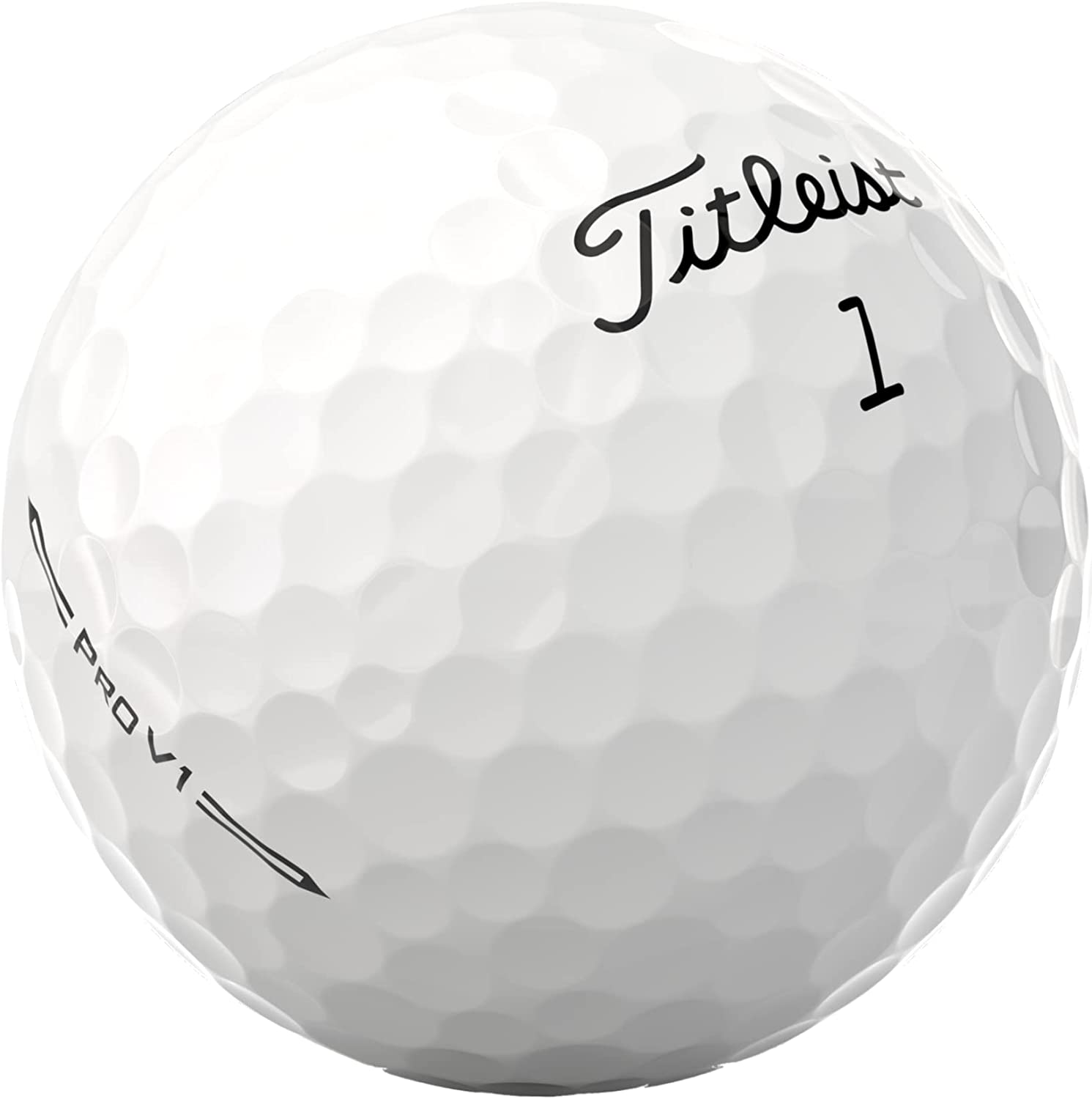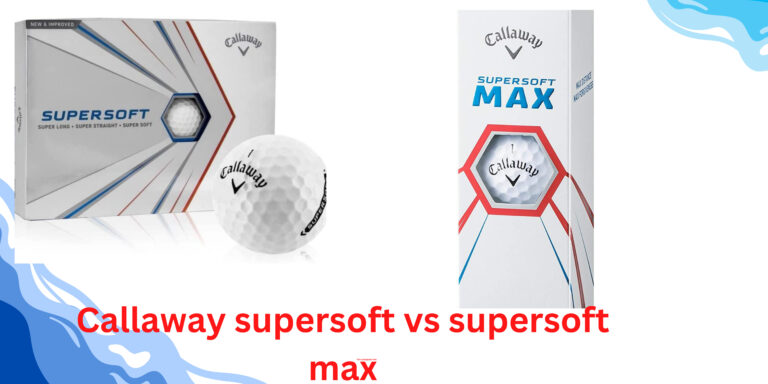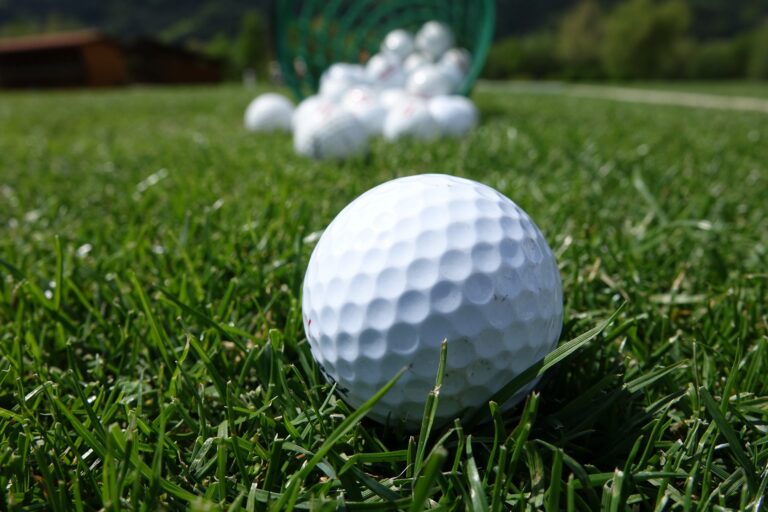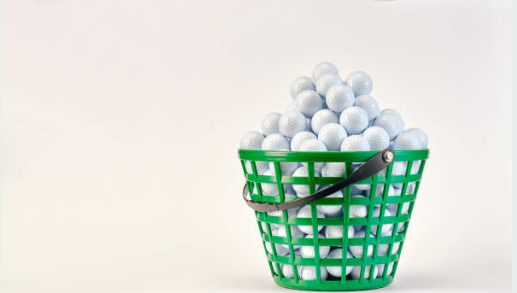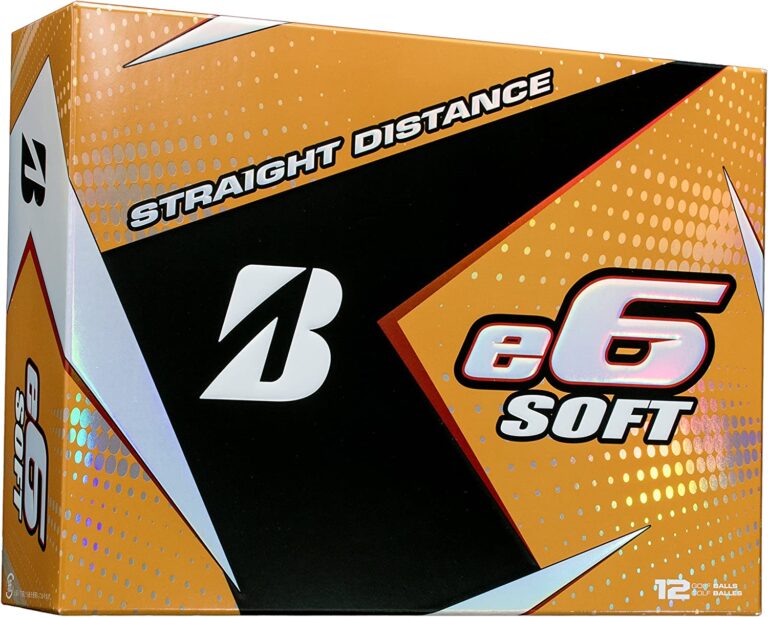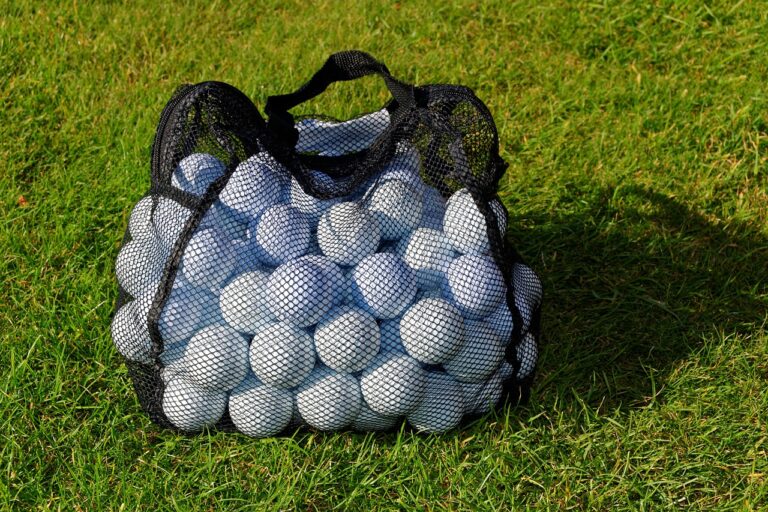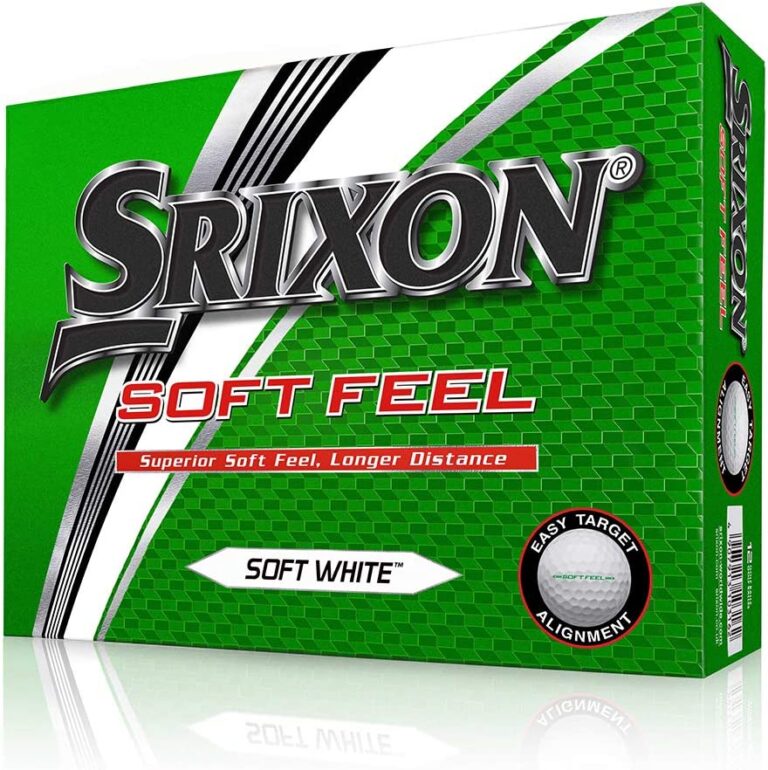How Many Dimples Are There on a Titleist Pro V1 Golf Ball?
In this post, we have attempted the big and burning question, how many dimples are there on a titleist pro v1 golf ball?
If you, like many others, have you ever wondered why golf balls have dimples? The answer lies in aerodynamics. Dimples on a golf ball’s surface help reduce drag and increase lift, allowing the ball to travel further and more accurately through the air.
In this article, we’ll dive deep into the world of golf ball dimples, particularly focusing on the popular Titleist Pro V1 golf ball.
The Titleist Pro V1 Golf Ball.
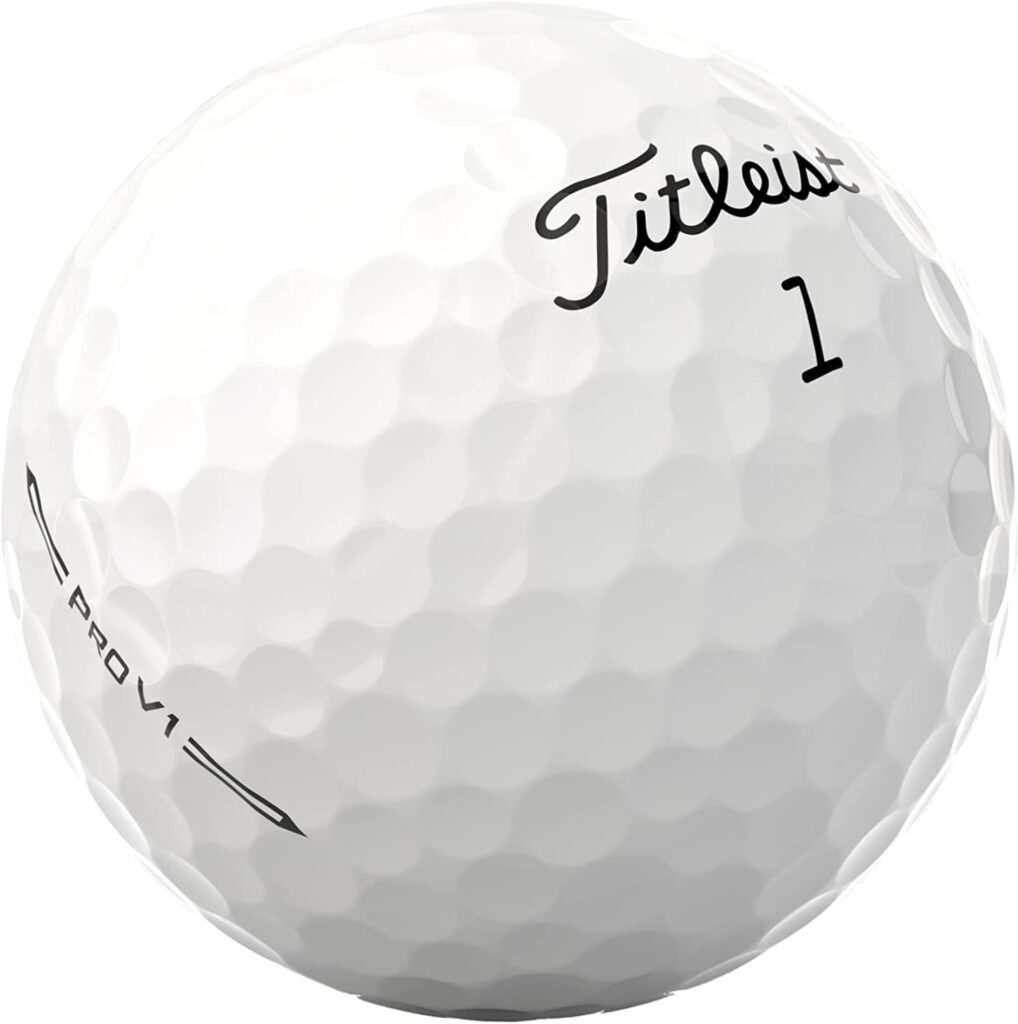
The Titleist Pro V1 golf ball is a high-performance golf ball designed for golfers who seek exceptional distance, control, and consistency.
Since its introduction in 2000, the Pro V1 has become a popular choice among professional and amateur golfers alike.
Next, let’s look at the features, design, and technology that make the Titleist Pro V1 stand out from the competition.
Construction and Materials.
The Titleist Pro V1 features a three-piece construction, which consists of:
- Core: The Pro V1’s core is made from a low-compression, high-speed material that provides an excellent balance of distance, feel, and control.
- Casing Layer: A high-speed casing layer surrounds the core, designed to improve ball speed and increase overall distance while maintaining a soft feel.
- Cover: The outermost layer is made from a soft urethane elastomer, providing exceptional durability, control, and a soft feel on the greens.
This combination of materials and construction results in a golf ball that offers long-lasting performance and a consistent ball flight, making it a top choice for golfers looking to elevate their game.
Dimple Pattern and Count
Now, let’s answer the burning question: how many dimples are there on a Titleist Pro V1 golf ball? The Pro V1 features a unique 388-dimple pattern, designed to provide optimal aerodynamics, consistent ball flight, and exceptional distance.
By reducing drag and increasing lift, the Pro V1’s dimple pattern enables the ball to cut through the air more efficiently, resulting in longer and more accurate shots.
Performance Characteristics.
The Titleist Pro V1 golf ball is known for its exceptional performance in various aspects of the game, including:
- Distance: Thanks to its advanced construction and aerodynamic design, the Pro V1 offers impressive distance off the tee and on approach shots.
- Control: The soft urethane elastomer cover provides excellent control and feels around the greens, enabling golfers to execute precise short-game shots with confidence.
- Consistency: The Pro V1’s unique dimple pattern and three-piece construction contribute to a consistent ball flight, allowing golfers to better predict their shots and improve their overall accuracy.
Who Should Use the Titleist Pro V1 Golf Ball?
The Titleist Pro V1 golf ball is suitable for golfers of all skill levels who are seeking to improve their performance on the course.
Its combination of distance, control, and consistency makes it a popular choice among professional golfers, as well as amateurs who aspire to elevate their game.
However, it’s essential to test different golf balls and find the one that best suits your specific needs and playing style.
By and large, the Titleist Pro V1 golf ball is a premium, high-performance golf ball that offers exceptional distance, control, and consistency.
Its advanced construction, materials, and unique dimple pattern make it a top choice for golfers looking to elevate their game.
History and Evolution of Golf Ball Dimples.
The history of golf ball dimples dates back to the early days of golf, and their evolution has played a significant role in shaping the modern game.
Come with us as we explore the fascinating journey of golf ball dimples, from their accidental discovery to the carefully engineered patterns we see today.
Early Golf Ball Designs:
The Featherie.
The earliest golf balls, known as “featheries,” were made from a leather pouch stuffed with feathers. These balls were hand-sewn, expensive to produce, and had limited durability.
Featheries had a relatively smooth surface, and their flight characteristics were vastly different from modern golf balls.
The Guttie.
In the mid-19th century, the “guttie” ball emerged as a more affordable and durable alternative to the feathery.
Made from solid gutta-percha, a type of rubber obtained from the sap of a tropical tree, guttie balls were smooth-surfaced and could be easily mass-produced. Golfers soon noticed that used guttie balls with scuff marks and scratches tended to fly farther and more accurately than new, smooth ones.
The Accidental Discovery of Dimples:
The improved performance of scuffed guttie balls caught the attention of golfers and ball manufacturers alike. This observation led to the intentional roughening of golf ball surfaces using various methods, such as hammering or carving patterns into the gutta-percha material.
These early experiments with surface texture laid the foundation for the development of dimpled golf balls.
The Birth of the Dimpled Golf Ball.
In 1905, English engineer William Taylor patented the first dimpled golf ball. His invention was based on the principle that dimples create turbulence in the air surrounding the ball, reducing drag and increasing lift. This allows the ball to travel farther and more accurately through the air.
Taylor’s dimpled golf ball revolutionized the game, and manufacturers soon began experimenting with different dimple patterns, sizes, and depths to optimize the ball’s aerodynamic properties.
Evolution of Dimple Patterns and Technology
Over the past century, golf ball dimples have continued to evolve, with manufacturers seeking the perfect balance of distance, accuracy, and feel. Advances in materials, manufacturing techniques, and aerodynamic research have led to a wide variety of dimple patterns and designs, including:
- Spherical Dimples: The most common shape, spherical dimples are designed to create uniform turbulence around the ball, promoting a stable and predictable flight.
- Hexagonal and Pentagonal Dimples: Some manufacturers have experimented with hexagonal and pentagonal dimples to optimize lift and reduce drag, resulting in a more penetrating ball flight.
- Double Dimples: This innovative design features smaller dimples within larger dimples, aiming to increase lift at the end of the ball’s flight for added distance.
Today’s golf ball dimples are the result of extensive research and development, with manufacturers using sophisticated computer modeling and wind tunnel testing to create the most aerodynamically efficient designs.
Modern Golf Ball Dimples and Their Impact on Performance.
Modern golf ball dimples play a crucial role in a ball’s performance, affecting factors such as distance, trajectory, spin, and control.
Different golf ball models feature varying dimple patterns and counts, tailored to suit the desired performance characteristics and target audience of each ball.
In conclusion, the history and evolution of golf ball dimples have had a significant impact on the game of golf. From the accidental discovery of scuffed guttie balls to the carefully engineered dimple patterns of today.
Comparing Dimple Counts of Different Golf Balls.
Titleist Pro V1 vs. Other Models
Different golf ball models may have varying dimple counts and patterns, as manufacturers tailor these aspects to the desired performance characteristics of each ball.
For example, the Titleist Pro V1x, a close relative of the Pro V1, has 348 dimples. Other brands and models may have even more or fewer dimples, with counts ranging from 300 to over 500.
Does Dimple Count Make a Difference?
While dimple count does impact a golf ball’s performance, it is not the sole determinant of a ball’s quality or suitability for a particular golfer.
Other factors, such as construction, materials, and compression, also play significant roles in determining a golf ball’s overall performance characteristics.
How to Choose the Right Golf Ball for You.
Consider Your Skill Level:
When selecting a golf ball, it’s essential to consider your skill level and playing style. Higher handicap golfers may benefit from balls designed to maximize distance and forgiveness, while lower handicap players may prefer balls that offer more control and feel around the greens.
Assess Your Priorities.
Think about what aspects of your game you’d like to improve or prioritize. Are you looking for more distance off the tee, better control on approach shots, or a softer feel on the greens? Different golf balls offer different performance characteristics, so it’s essential to choose one that aligns with your goals.
Test Different Balls
The best way to find the right golf ball for you is to test various models on the course or at a practice facility.
This hands-on experience will give you a better understanding of how each ball performs in real-world conditions and help you determine which one best suits your game.
FAQs.
Here are some answers to the most frequently asked questions about dimples Titleist golf balls. Hope you would have answers to your questions.
Why do golf balls have dimples?
Golf balls have dimples to improve their aerodynamics, reducing drag and increasing lift. This enables the ball to travel further and more accurately through the air.
How many dimples are on a Titleist Pro V1 golf ball?
The Titleist Pro V1 golf ball features 388 dimples.
Do all golf balls have the same number of dimples?
No, different golf ball models have varying dimple counts and patterns, as manufacturers tailor these aspects to the desired performance characteristics of each ball.
Does a higher dimple count always mean better performance?
A higher dimple count does not necessarily mean better performance. While dimple count does impact a golf ball’s performance, other factors such as construction, materials, and compression also play significant roles in determining a ball’s overall performance characteristics.
Additionally, the ideal dimple count and pattern may vary depending on a golfer’s skill level and playing style.
How do I choose the right golf ball for my game?
To choose the right golf ball for your game, consider your skill level, playing style, and priorities. Test various models on the course or at a practice facility to determine which ball best suits your needs.
Conclusion.
In conclusion, the Titleist Pro V1 golf ball features a unique 388-dimple pattern designed to optimize aerodynamics, distance, and consistency.
While dimple count plays a role in a golf ball’s performance, it’s crucial to consider other factors such as construction, materials, and skill level when selecting the perfect ball for your game.

